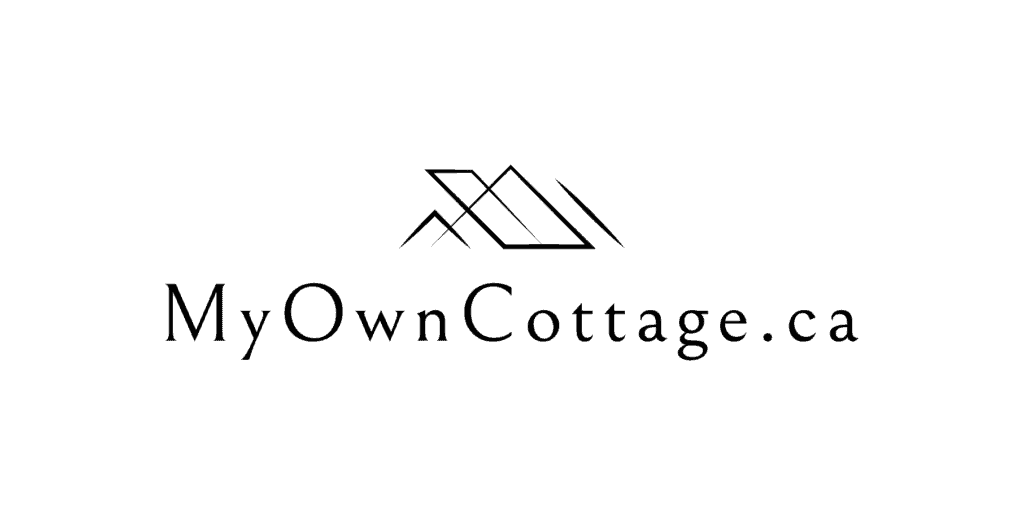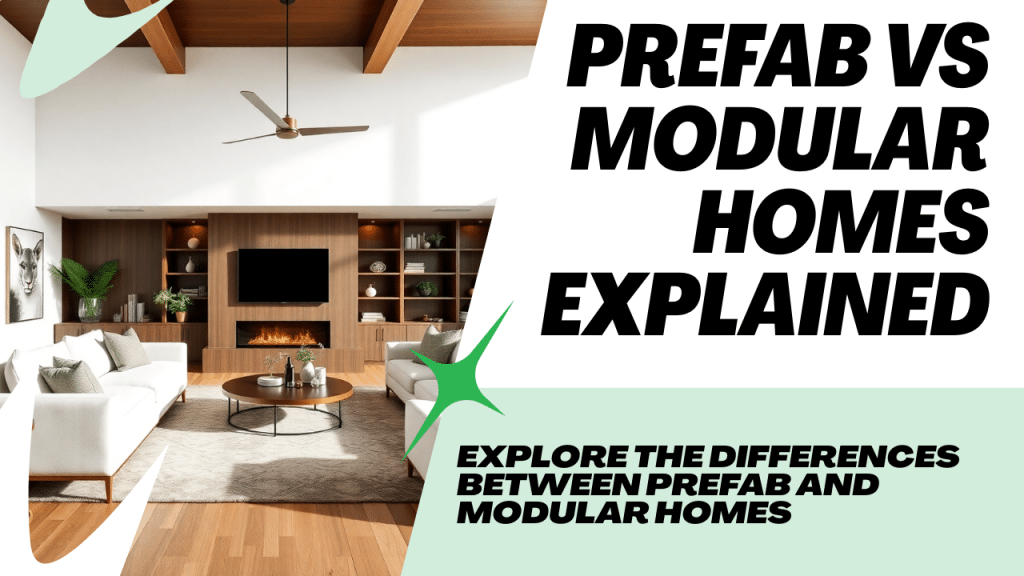What Is the Difference Between Prefab and Modular Homes in Ontario?
Last updated: September 4th, 2025
If you’ve been searching for prefab modular homes in Ontario, you’ve likely come across confusing terminology.
While related, prefab and modular homes are not the same—and the difference can significantly affect building codes, zoning, financing, and resale value.
Key Takeaways: Differences Between Prefab and Modular Homes in Ontario
Prefab is the broad category for homes built in a factory and assembled on-site.
Modular is a specific type of prefab built as large 3D sections (modules) that meet the Ontario Building Code (OBC).
The choice between prefab vs. modular impacts cost, customization, permits, and long-term value.
✅ This guide breaks down the distinctions and offers Ontario-specific insights to help you choose the right option for your new home.
What Are Prefab Homes in Ontario?
Definition and Features
Prefab homes—short for prefabricated homes—are built in sections at an off-site facility and transported for assembly on-site.
Compared to traditional stick-built houses, prefab homes are produced in controlled factory settings, which can reduce material waste, lower costs, and speed up timelines.
Types of Prefab Homes in Ontario
Prefab construction in Ontario includes several variations beyond modular homes:
Panelized homes – Flat wall and roof panels assembled on-site.
Manufactured homes – Factory-built on a steel frame, often delivered nearly complete.
Small prefab cabins – Affordable seasonal or rural getaways.
Benefits and Drawbacks
Pros of Prefab Homes in Ontario
Faster build and delivery timelines compared to stick-built homes.
Lower upfront costs, making them attractive for budget-conscious buyers.
Reduced material waste thanks to factory-controlled construction.
Some homeowners also consider how their choice today affects future flexibility.
Learn whether prefab modular homes can be expanded or upgraded after installation to keep your home adaptable over time.
Cons of Prefab Homes in Ontario
Limited customization options compared to modular or stick-built homes.
Zoning restrictions in some Ontario municipalities may limit where prefab homes can be placed.
Potentially lower resale value over the long term when compared to modular or traditional homes.
Working With the Right Builder
Because modular homes must meet Ontario Building Code standards, working with an experienced team is critical.
Explore the top-rated prefab modular home builders in Ontario who ensure code compliance and design flexibility.
What Are Modular Homes in Ontario?
Definition and Features
A modular home in Ontario is built in large sections, called modules, inside a factory and then transported to a permanent foundation on the building site.
Unlike manufactured homes or other types of factory-built housing, modular homes must comply with the Ontario Building Code (OBC). This means they meet the same quality and safety standards as traditional stick-built homes in Ontario.
Learn more about how prefab modular homes meet Ontario Building Code requirements.
Where Modular Homes Are Used in Ontario
Custom family homes – Offer full flexibility in design, layout, and finishes, making them a strong alternative to stick-built homes.
Multi-unit residential developments – Modular construction is increasingly used for townhouses, apartments, and affordable housing projects across Ontario.
👉 See how prefab modular homes be customized in Ontario to meet different needs.
Benefits and Drawbacks
Pros of Modular Homes in Ontario
Meets or exceeds Ontario Building Code (OBC) requirements, ensuring high safety and quality.
Highly customizable in layout, finishes, and design—ideal for permanent family homes.
Comparable resale value to traditional stick-built homes in Ontario, making them a strong long-term investment.
Browse the most popular prefab modular home designs in Ontario to see how layouts and finishes can be tailored to different lifestyles.
Cons of Modular Homes in Ontario
Higher upfront investment compared to basic prefab panels or manufactured homes.
Requires permits, inspections, and foundation preparation, which can extend timelines and add costs.
Prefab vs. Modular Homes – What are the Key Differences?
While prefab homes may start at a lower price point, modular homes often deliver stronger value over time.
Learn more about prefab modular home costs in Ontario compared to traditional homes to see how affordability stacks up long-term.
Below is a side-by-side prefab modular home comparison Ontario buyers frequently ask for:
| Feature | Prefab Homes | Modular Homes |
|---|---|---|
| Construction | Panels or sections assembled on-site | Modules delivered and set on permanent foundation |
| Customization | Limited (fixed layouts, few options) | Flexible (custom design, floor plans, finishes) |
| Cost Range in Ontario | Lower upfront, small builds from ~$100K | Modular home prices Ontario 2025 average $250K+ |
| Build Time | Faster (weeks) | Longer (months, with permitting) |
| Resale Value | Can be lower depending on zoning | Comparable to stick-built homes |
⚖️ See how prefab modular homes compare to traditional build times.
Which Home Construction Option Is Better for Ontario Buyers?
When to Choose Prefab
Budget-conscious buyers – A cost-effective way to enter the housing market with lower upfront investment.
Seasonal or recreational buyers – Ideal for cottages and small prefab cabins in Ontario’s cottage country.
Rural builds – Suitable for smaller lots in rural Ontario, where zoning permits prefab construction.
When to Choose Modular
Families seeking a long-term home investment with strong durability and comparable resale value to stick-built homes.
Buyers wanting full customization, including kitchens, floor plans, and finishes.
Homeowners who prioritize resale value and strict code compliance, since modular homes meet or exceed the Ontario Building Code (OBC).
As highlighted in a CMHC case study, one Ontario homeowner explained that choosing modular provided “the same peace of mind as a traditional build, but with faster delivery and less on-site disruption.”
Learn more about the financing options for prefab modular homes in Ontario to see how banks approach prefab versus modular builds.
Making the Right Choice: Prefab or Modular Homes in Ontario
Both prefab and modular homes provide strong alternatives to traditional stick-built construction, but they serve different needs:
Prefab homes in Ontario focus on affordability and speed, making them ideal for budget-conscious or seasonal buyers.
Modular homes in Ontario emphasize long-term value, customization, and compliance with the Ontario Building Code (OBC), making them better suited for permanent family residences.
👉 If you’re comparing your options, start by exploring our full guide on prefab modular homes in Ontario for deeper insights into costs, builders, and financing options.
Alternatively, you can book a free consultation, call us directly, or view our design catalogue to get further guidance on how to best align your new home with your personal needs.
🧑💼 Request a Free Consultation
📲 Call Us Directly: (705) 345-9337
🏘️ View Our Design Catalogue
✅ Ontario-Built | ⚡ Energy-Efficient | 🏡 Fully Customizable | 🚚 Fast Delivery
Alternatively, for your convenience, you can also simply fill out the contact form below and we’ll get back to you soon! 👇
FAQs About Prefab vs. Modular Homes in Ontario
What is the difference between prefab and modular homes in Ontario?
In Ontario, prefab is the broad category for any home built partly in a factory and assembled on-site, while modular homes are a specific type of prefab. Modular homes are constructed as complete 3D units (modules) in a factory, then transported and installed on a permanent foundation. All modular homes are prefab, but not all prefab homes are modular.
Is a modular home just a prefab home?
Yes. All modular homes are prefab, but prefab also includes panelized, pre-cut, and mass timber homes. The difference is that modular homes are built as full modules, not just panels or kits.
What does prefab mean in housing?
Prefab, short for prefabricated, means parts of the home are manufactured in a factory before being delivered to the site for assembly. This can range from wall panels to entire modules.
Are prefab and modular homes the same in Ontario?
No. Modular homes are one type of prefab, but prefab also includes panelized, pre-cut, and kit homes. The terms are often used interchangeably, but legally and structurally they differ.
Do modular homes meet the Ontario Building Code?
Yes. Modular homes in Ontario are built to meet or exceed the Ontario Building Code, making them as durable and safe as traditional site-built homes.
What types of prefab homes exist in Ontario?
Modular homes – complete 3D modules assembled on-site.
Panelized homes – flat panels built off-site.
Pre-cut or kit homes – factory-cut materials shipped for assembly.
Mass timber homes – engineered wood components pre-assembled at the site.
Which is better: prefab or modular homes in Ontario?
It depends on your needs:
Prefab (panelized or pre-cut): faster and cheaper, but less customizable.
Modular: higher upfront cost, but fully customizable, long-lasting, and has better resale value.
Are modular homes cheaper than prefab homes in Ontario?
Not always. Panelized or pre-cut prefab homes can be less expensive upfront, but modular homes often deliver better value long-term with higher quality and comparable resale to stick-built homes.
Can prefab and modular homes be financed in Ontario?
Yes. Modular homes are usually eligible for standard mortgages since they meet building codes. Some prefab types may face restrictions depending on zoning, permanence, and lender policies.
Do prefab homes appreciate in value in Ontario?
Modular homes generally appreciate like traditional homes. Panelized or manufactured prefab homes may not gain as much value, depending on zoning and location.
How long does it take to build prefab vs modular homes in Ontario?
Prefab (panelized): often just weeks once materials are delivered.
Modular: typically several months including permits, delivery, and foundation work.
Are prefab homes allowed everywhere in Ontario?
Not always. Some municipalities have zoning restrictions on certain prefab types, especially manufactured or mobile-style homes. Always confirm local bylaws.
How do prefab vs modular homes perform in Ontario winters?
Both can be highly energy-efficient when built to code. Modular homes usually match traditional homes in insulation and durability, while panelized prefab homes vary depending on design and builder.
🛡️ Verified Third-Party Resources
For added confidence and transparency, here are trusted external sources that support modular homebuilding in Ontario:
Ontario Building Code (O. Reg. 332/12)
Official provincial regulations that govern modular and factory-built homes.Tarion Warranty Corporation
Provides home warranty coverage and builder licensing in Ontario.Canadian Home Builders’ Association (CHBA)
National organization supporting residential construction, modular certification, and best practices.CMHC – Canada Mortgage and Housing Corporation
Federal housing authority offering insights on modular housing affordability, financing, and energy efficiency.Statistics Canada: Housing Data
Data-driven research on Canadian housing trends, ownership, affordability, and construction.


